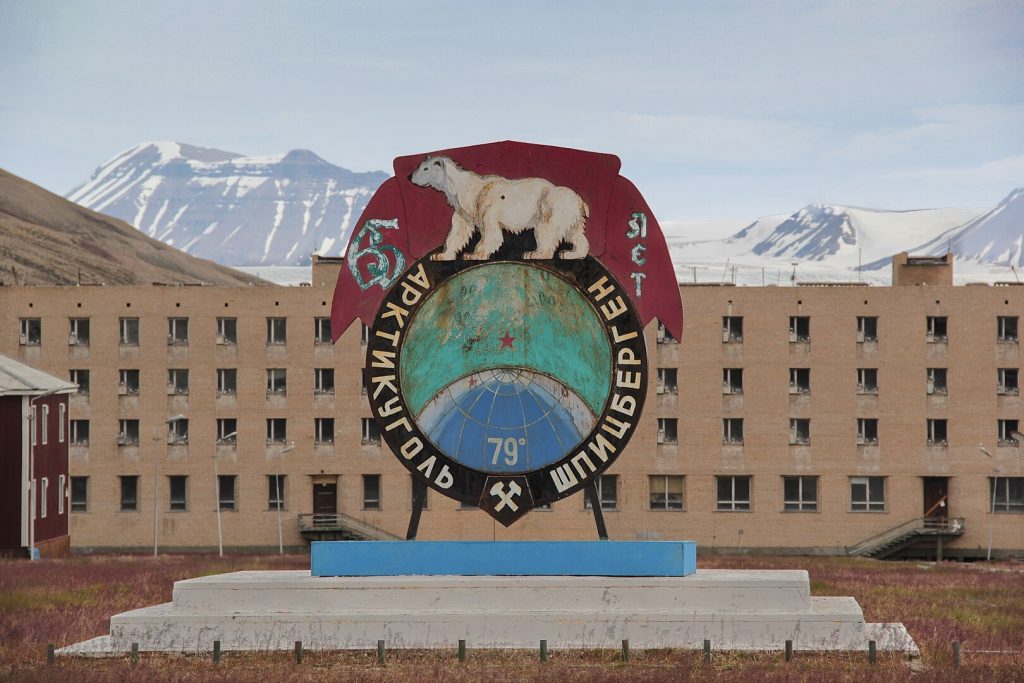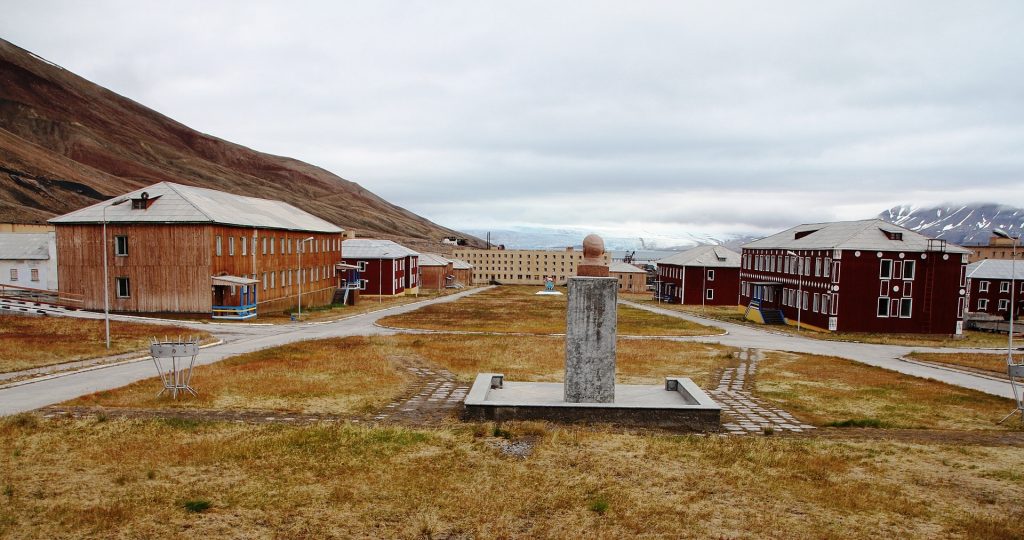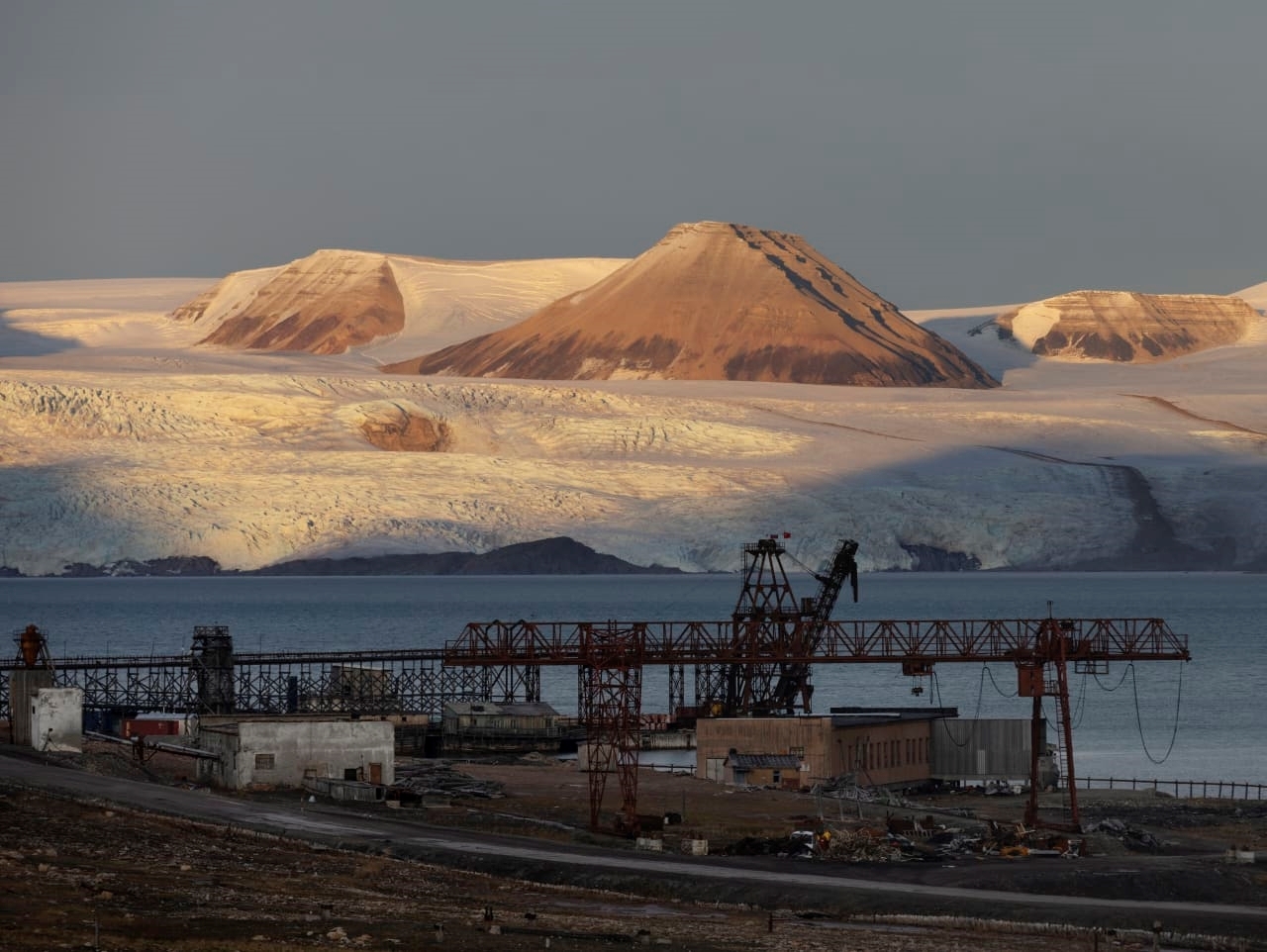SVALBARD, Norway—Nestled high above the Arctic Circle, the Norwegian archipelago of Svalbard is home to hundreds of polar bears and boasts prime views of the Northern Lights.
Now the territory of fewer than 3,000 people is emerging as a front line in Russia and China’s attempts to dominate the Arctic’s trade routes and expand their military presence in the region at the expense of the West.
Formally part of Norway, Svalbard—a collection of mountains, glaciers and fjords about the size of West Virginia—has an unusual status. A treaty signed in 1920 granted the Norwegians sovereignty but allowed signatory states, including the Soviet Union, to exploit resources and conduct research .
But in recent years this quirk has provided a way for Moscow and Beijing to strengthen their foothold in the Arctic as tensions with the West worsened over the invasion of Ukraine , unsettling Norway and its allies in NATO.
In one recent example, a Chinese delegation last month traveled to Svalbard to meet Russian officials. On the agenda: an abandoned Russian settlement on the archipelago called Pyramiden. Once a bustling Soviet coal mining community, Pyramiden is now a ghost town, its empty streets patrolled by white Arctic foxes. Now Russia wants to revive it by building a research center with China and by attracting tourists to what one local Russian employee called a “Soviet Disneyland.”
Since the war, Russia has held a military-style parade, illegally erected an Orthodox cross and issued a stark warning to Norway not to challenge Russia on Svalbard. Earlier this month, a Russian lawmaker proposed building a prison for terrorists there. Just a month before the invasion, Norwegian officials suspected Russian involvement in a severed undersea fiber-optic cable near Svalbard.
Norwegian officials, meanwhile, report a growing Chinese interest in acquiring land on the archipelago, including a recent proposal to establish a laser-research station. Svalbard has become an increasingly important espionage target for both China and Russia, they say, with Norwegian companies advising employees to turn off their phones when traveling to Russian-controlled dwellings.
“We are seeing the return of geopolitical competition in the Arctic and Svalbard is a key piece of the puzzle,” said Norway’s Foreign Minister Espen Barth Eide in an interview.
Trade routes and oil
The competition for Svalbard is emblematic of the intensifying global race for the Arctic. The region contains up to a fifth of the world’s untapped oil and natural-gas reserves, as well as other minerals. As the ice melts, Moscow and Beijing want to use the shorter Northern Sea Route to ship goods via the Arctic, avoiding chokepoints at the Suez Canal and Malacca Strait.
Russia has reopened dozens of Soviet military bases in the Arctic. China, which declared itself a “near-Arctic” nation in 2018 despite being some 900 miles from the Arctic Circle, is building new icebreakers.
Moscow’s invasion has been a catalyst for two Arctic states— Sweden and Finland —to join the North Atlantic Treaty Organization. The U.S., meanwhile, is trying to catch up . A lack of icebreakers has limited its ability to operate in the region.
“We expect a great power competition in this area,” said Anne Marie Aanerud , state secretary at Norway’s Ministry of Defense.
The Russian consul on Svalbard, Andrei Chemerilo , said the importance of the Arctic is “difficult to overestimate,” given the region’s resources and trade routes. He said that Moscow was focused on preserving the Arctic as a peaceful territory.
On Svalbard, Chemerilo said, “we note the growing interest of representatives of the People’s Republic of China in the archipelago and in developing scientific cooperation.”
China’s Foreign Ministry didn’t respond to requests for comment.
Svalbard sits at the tip of the Bear Gap, a critical maritime thoroughfare between mainland Norway and the archipelago. Crucial for trade, it also lies to the north of the Kola Peninsula, which houses Russia’s Northern Fleet, including most of its nuclear submarines. With Russia’s land forces stretched by the war in Ukraine, Moscow relies more heavily on the Northern Fleet and its nuclear forces for deterrence, officials said.
Norway’s Eide said that in a conflict Russia may attempt to block the Bear Gap to prevent U.S. ships from entering from the West. In a drill last year, Russia showcased its capacity to block allied access by deploying vessels to strategic positions. This past June, Russian nuclear submarines practiced firing missiles at targets in the nearby Barents Sea.
“We’re not in that situation now, but they will be planning for that, and so we need to plan how to counter it,” Eide said.
Norway this year significantly boosted its military spending plans, investing in everything from new submarines that can last longer underwater to surveillance drones to new space capabilities to monitor the Arctic. It shares more intelligence on the region with the U.S. On Svalbard, Norwegian police are now a more frequent presence in Russian settlements as a show of force, a Norwegian official said.
In past decades it was coal mining, not geopolitics, that drew people to Svalbard.
Russia closed the loss-making Pyramiden operation in 1998 but still mines in the town of Barentsburg. That business, too, is unprofitable but the Russian state subsidizes it to keep its beachhead on Svalbard, Norwegian officials say. Chemerilo, the consul, said that Russia didn’t need to establish itself on Svalbard since “Russia was, is and will be on the archipelago.”
Suspicions of sabotage
More recently, the officials say, Russia has graduated beyond mining.
A Russian fishing trawler was suspected of intentionally severing an essential internet cable linking Svalbard in January 2022 after crisscrossing more than 100 times over the exact cut site. While Norwegian authorities haven’t officially reached a conclusion, security officials believe the damage was deliberate.
“It was a pretty major signal that they can do anything they want,” said the Norwegian official. “For us, it clearly showed the vulnerabilities.”
Chemerilo said that it was unclear what the charges were and what the Russian government had to do with it.
Last year, Russia held what Norwegian officials describe as a militaristic parade on Barentsburg, something never before seen on Svalbard, where “warlike” activities are specifically prohibited by the 1920 treaty. Some 50 vehicles, including trucks, tractors and snowmobiles, moved through a town of 300 people, many of whom waved Russian flags. Russia was fined for unauthorized use of a Mi-8 helicopter, which flew overhead.
Later, Russian officials erected a giant Orthodox cross in Pyramiden, also violating Svalbard’s regulations. This year, they hoisted Soviet flags in Barentsburg and Pyramiden, including on a coal-loading crane in the Pyramiden harbor where a Norwegian flag used to fly.
Chemerilo denied Russia was involved in any provocative actions on Svalbard.

Pyramiden is a semi-abandoned settlement located on the island of Spitsbergen in Svalbard, Norway. / Wikimedia Commons/Buiobuione
In February, Russian Deputy Prime Minister Yuri Trutnev warned Norway to respect Russian rights on Svalbard before invoking the war in Ukraine.
“Today, our fighters are shedding blood for the sovereignty of our country,” Trutnev said. “The work here is also a fight for our sovereignty, a fight for the rights of Russia and Russians.”
The Ministry of Defense’s Aanerud said that with these actions, Russia is “trying to probe, to test Norway and its NATO allies.”
China, meanwhile, operates a research station in the northern settlement of Ny-Ålesund called Yellow River. Norwegian officials are concerned about the possible military applications of research conducted there.
One of the organizations there is called the China Research Institute of Radio Wave Propagation, itself part of CETC, a state military electronics enterprise calling itself the “main force in China’s military electronics industry.” CETC says on its website that the institute “provides technological support and service guarantees for national defense.” On its official WeChat account, the institute often references its military links, with one post saying that it has a “mission of serving the country and strengthening the military through science and technology.”
CETC didn’t respond to a request for comment.
In July, the Norwegian government blocked a plan to sell a piece of land for over $300 million amid worries it might be acquired by China. Chinese actors have tried to purchase other land, Norwegian officials said, and have proposed setting up a station to research lidar, which uses lasers to create 3-D maps that can be used for self-driving cars or military applications.
And across the Barents Sea, Chinese shipping companies have expressed interest in expanding the Norwegian port of Kirkenes near the Russian border.
PST, Norway’s domestic intelligence and security agency, said in a report that “Chinese research activities on Svalbard can help normalize a Chinese presence, facilitating intelligence activities.”
There are increasing signs that Beijing and Moscow are joining forces.
Following the invasion of Ukraine, Russia and China have deepened their Arctic ties, from Chinese energy investments to security links. Last year, the Chinese coast guard agreed to strengthen law-enforcement cooperation with Russia’s FSB security service. In August, a Chinese icebreaker for the first time paid a visit to Murmansk on the Kola Peninsula.
A statue of Lenin
Russia’s research-center plan in Pyramiden is a further steppingstone.
Once populated by over 1,000 people, the town, which hosts the world’s northernmost Lenin statue, has since been largely frozen in time. A KGB outpost with soundproof rooms and furnaces for burning documents remains sealed.

Αn abandoned Soviet-style settlement at Spitsbergen, Svalbard (Norway). The place was a coal mining community, abandoned in 1998./ Wikimedia Commons/Bjoerdvet.
On a recent afternoon, a small group of tourists shuffled down the abandoned streets as a Russian guide carried a rifle to protect against polar bears that now roam the town. The eerie quiet was punctured only by bird screeches from a former miners’ dorm now known as the Birds House for its new inhabitants. A small gift shop sold Matryoshka dolls and “Back to U.S.S.R.” T-shirts. A cafe serves a powerful 78% alcoholic drink known as “The See You Tomorrow.”
Russian officials have said they expect work on the research center to start this year. Though research activities are generally allowed under the Svalbard treaty, Norway isn’t enthused about the idea. According to a Norwegian official, it would be difficult to monitor what happens there.
“We are not so happy about it,” Foreign Minister Eide said. “We want research on Svalbard to be conducted in the facilities that we provide.”
Norwegian officials say that while China doesn’t appear to be an immediate security threat in the region, it is building its capabilities for the future.
“Russia feels like a tornado, something in your face that you have to react to,” said Hedvig Moe , who was deputy director of PST, the security agency, until May 2023 and is now a counsel at Oslo-based law firm Thommessen. “China is like climate change, it is slower, it is happening over time,” said Moe, who grew up on Svalbard. “But one day you might wake up and think, oh my God, look at what happened here.”
Among Svalbard’s residents, the recent surge in geopolitical attention on the archipelago, a community historically known for its peaceful coexistence, has brought about a sense of unease.
“The Russians used to come to our events, we went to their parades, we had their vodka,” said Terje Aunevik , the mayor of Longyearbyen, Svalbard’s administrative center. “Suddenly it all dramatically changed in February 2022. The trust is now broken.”
Write to Georgi Kantchev at georgi.kantchev@wsj.com



